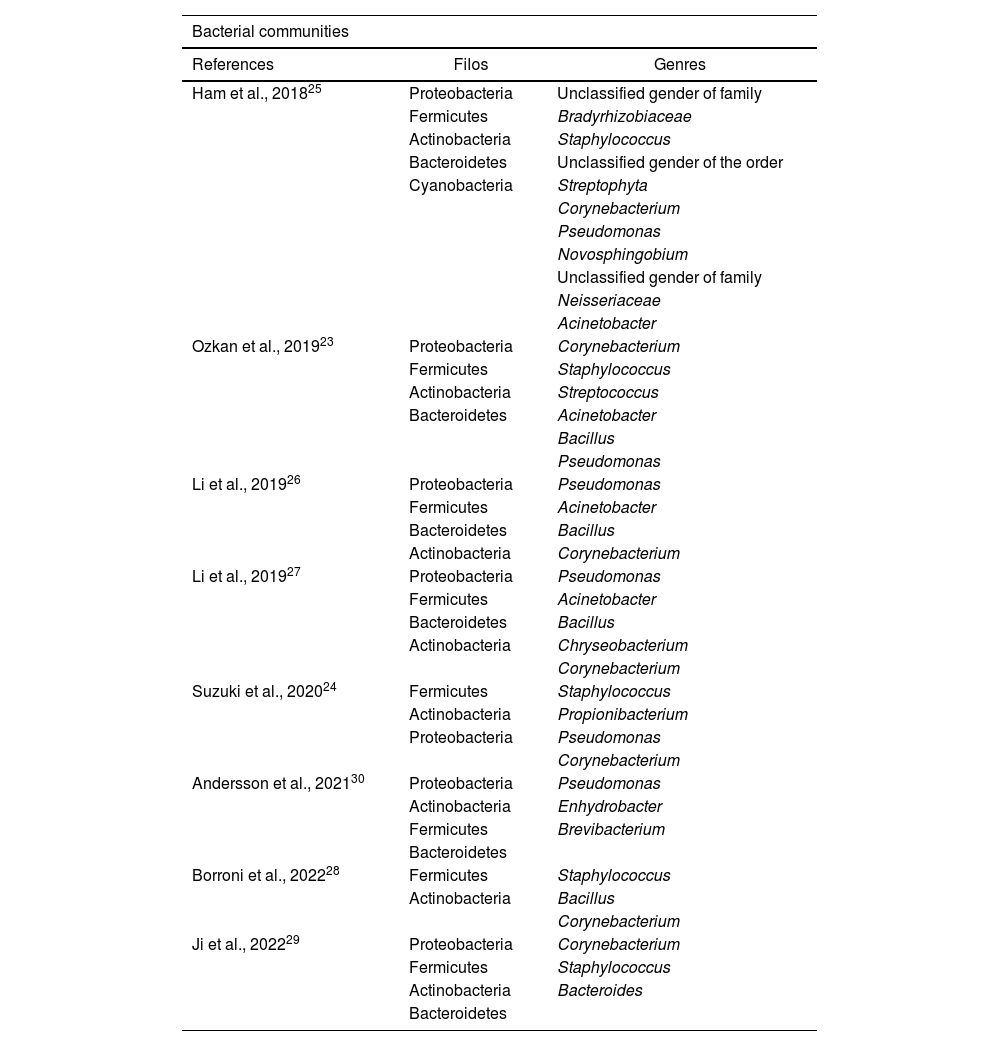Normal ocular microbiota is composed of different Gram-negative and positive bacterial communities that act as commensals on the ocular surface. An imbalance in the homeostasis of the native species or dysbiosis triggers functional alterations that can eventually lead to ocular conditions, indicating the use of contact lenses as the most relevant predisposing factor. Through a bibliographic review that added scientific articles published between 2018 and 2022, the relationship between healthy ocular microbiota and dysbiosis associated with the use of contact lenses that trigger ocular conditions was analyzed. The ocular microbiota in healthy individuals is mainly composed of bacteria from the phyla: Proteobacteria, Actinobacteria and Firmicutes. These bacterial communities associated with the use of contact lenses develop dysbiosis, observing an increase in certain genera such as Staphylococcus spp. and Pseudomonas spp., which under normal conditions are commensals of the ocular surface, but as their abundance is increased, they condition the appearance of various ocular conditions such as corneal infiltrative events, bacterial keratitis and corneal ulcer. These pathologies tend to evolve rapidly, which, added to late detection and treatment, can lead to a poor visual prognosis. It is suggested that professionals in the ophthalmology area learn about the composition of the communities of microorganisms that make up this ocular microbiota, in order to correctly distinguish and identify the causative agent, thereby providing a adequate and effective treatment to the user.
La microbiota ocular normal está compuesta por diferentes comunidades bacterianas Gram negativas y positivas que actúan en la superficie ocular como comensales. Un desequilibrio en la homeostasis de las especies nativas o disbiosis desencadena alteraciones funcionales que eventualmente pueden conllevar afecciones oculares, señalándose al uso de lentes de contacto como el factor predisponentes más relevante. Mediante una revisión bibliográfica que incluyó artículos científicos publicados entre el año 2018 y 2022, se analizó la relación entre la microbiota ocular sana, la disbiosis asociada al uso de lentes de contacto que desencadena afecciones oculares. La microbiota ocular en individuos sanos, se compone principalmente por bacterias de los filos: Proteobacterias, Actinobacteria y Firmicutes. Estas comunidades bacterianas al verse asociadas al uso de lentes de contacto desarrollaron disbiosis, observándose un aumento de ciertos géneros como Staphylococcus spp. y Pseudomonas spp., que en condiciones normales son comensales de la superficie ocular, pero al estar aumentada su abundancia condicionan la aparición de diversas afecciones oculares como eventos infiltrativos corneales, queratitis y úlcera corneal bacterianas. Dichas patologías tienden a evolucionar de manera rápida, lo que, sumado a una detección y tratamiento tardíos, puede desencadenar en un pronóstico visual deficiente. Se sugiere que, frente a diversas afecciones de la superficie ocular, los profesionales en el área de oftalmología conozcan la composición de las comunidades de microorganismos que conforman esta microbiota ocular, de manera de distinguir e identificar correctamente el agente causal y con ello brindar un tratamiento adecuado y efectivo al usuario.









